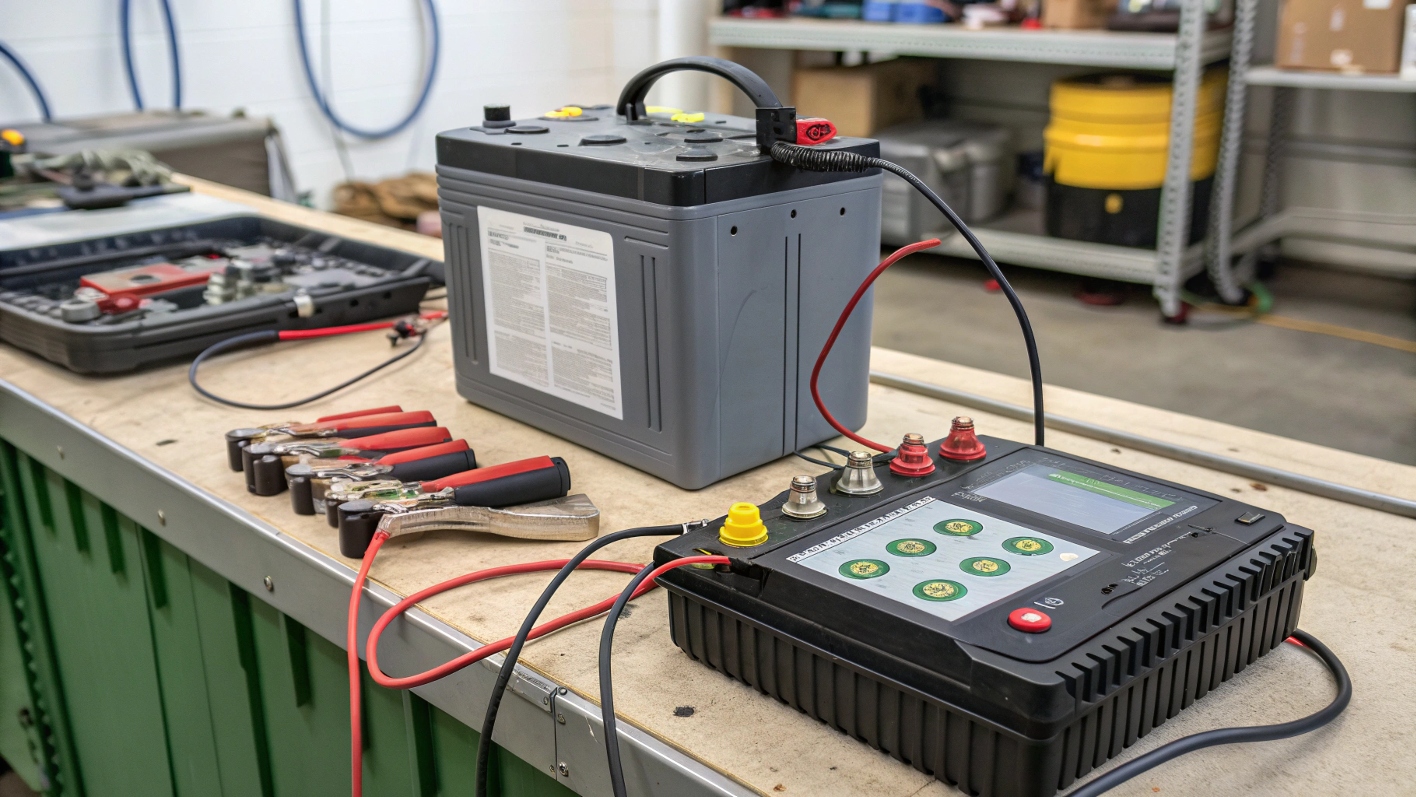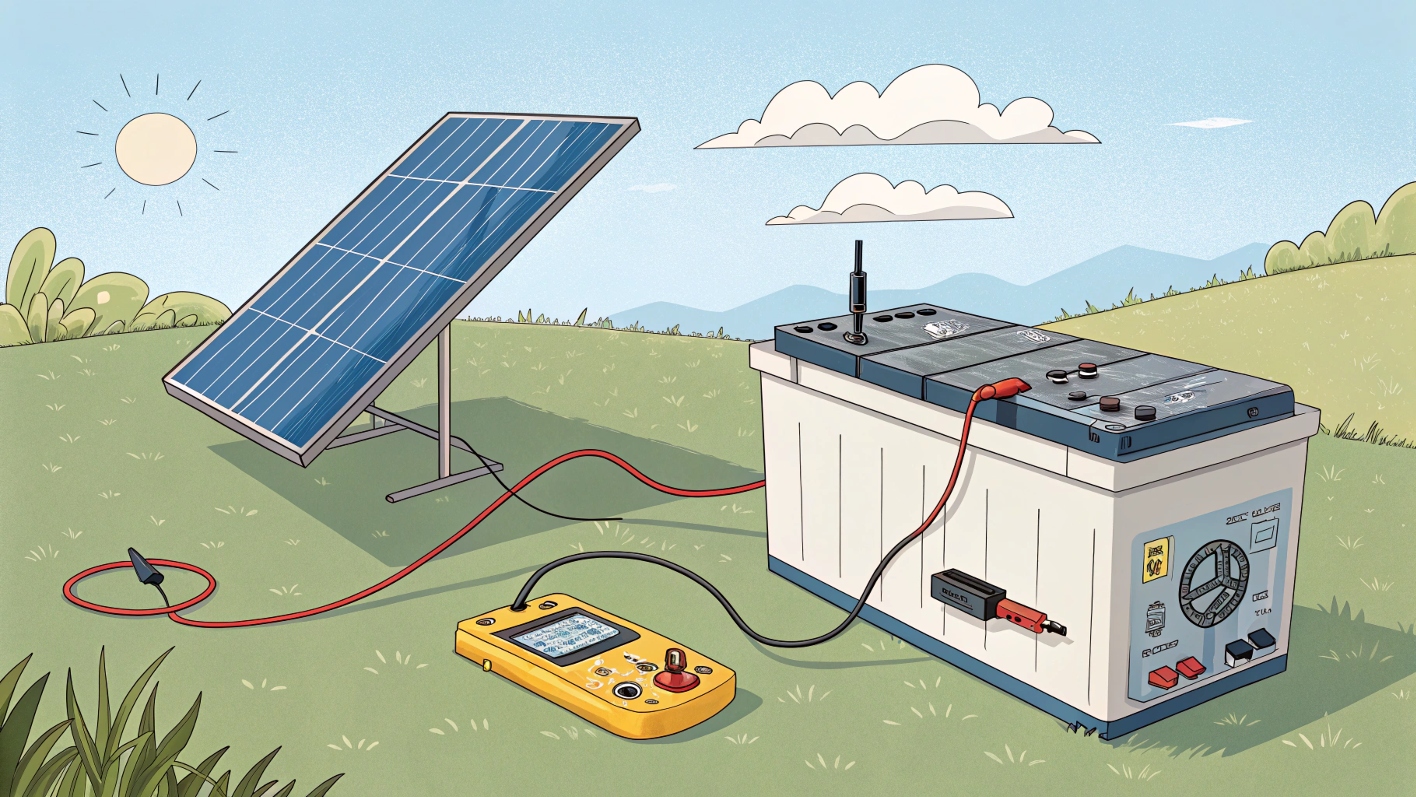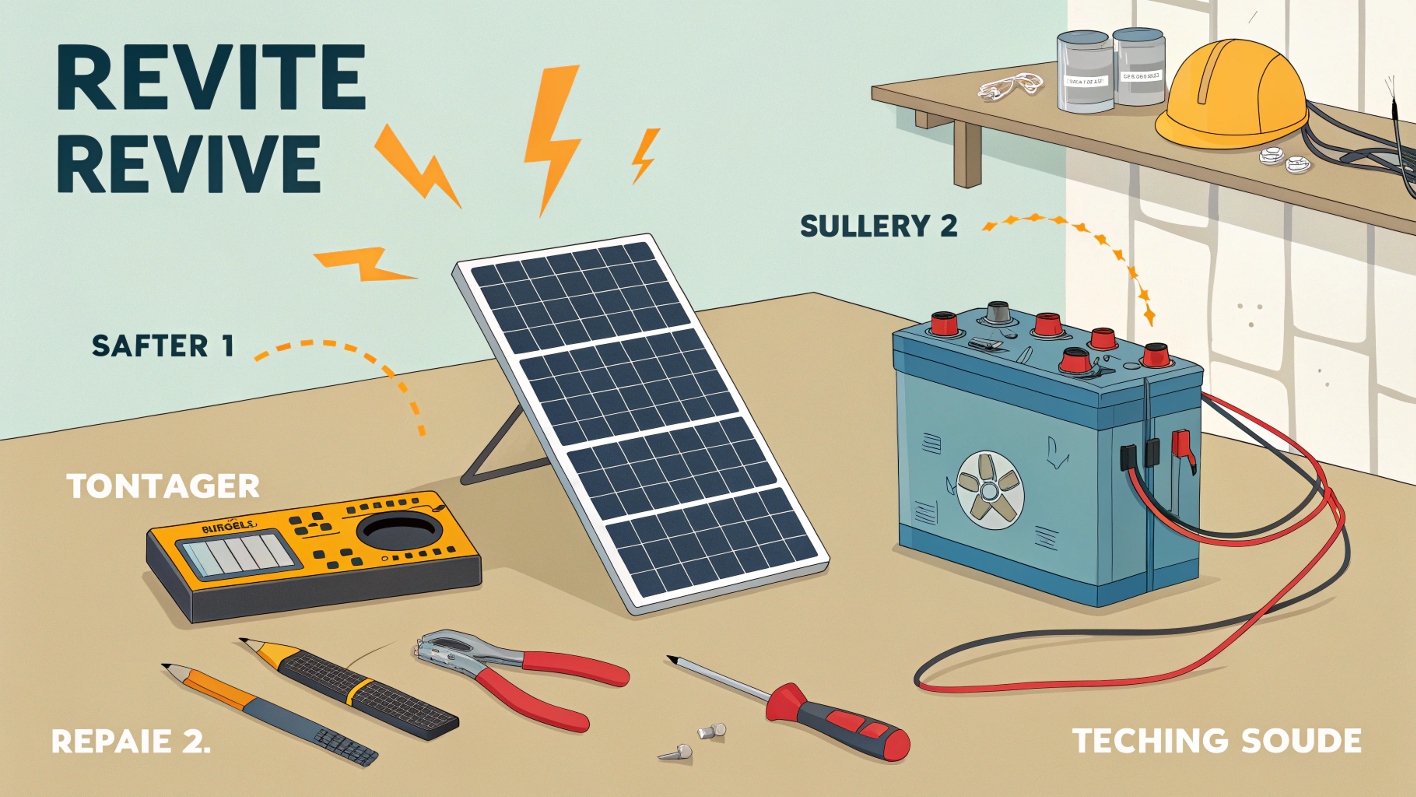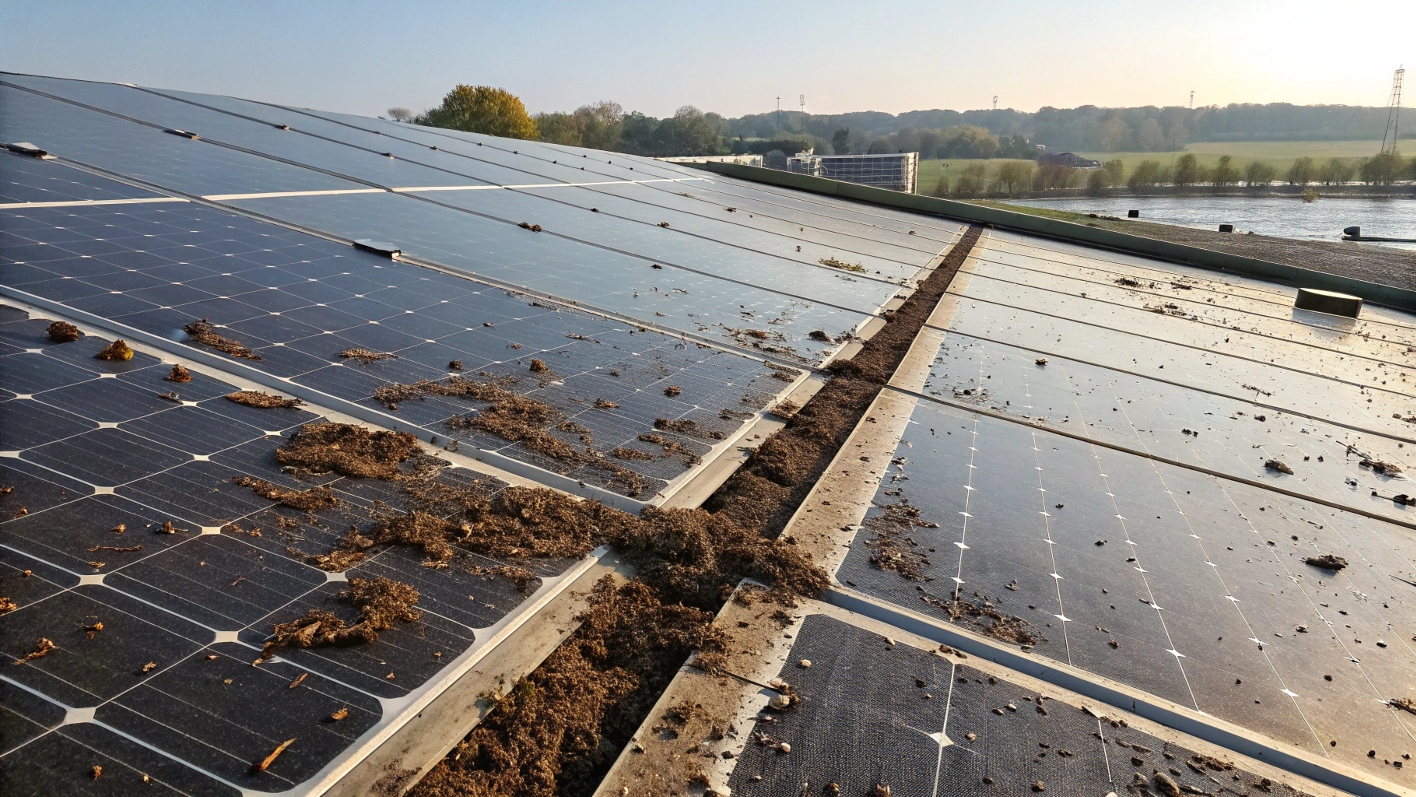내 태양열 배터리 전류를 부활시키는 방법?
당신의 경우 태양전지 isn’t holding charge or seems to be losing capacity, it may be possible to restore its performance. One common method for reviving a solar battery is equalization charging, which helps to break down sulfate crystals and improve battery performance. Below are the steps and additional considerations for restoring the charge to your solar battery.
1. Equalization Charging
Equalization charging is a process where you overcharge the battery slightly to break down sulfate crystals that can form on the plates of lead-acid batteries. This is especially useful for 리드산 그리고 AGM batteries that are suffering from 황산.
Steps for Equalization Charging:
Connect the Battery to a Charger:
a quality battery charger that is suitable for your battery type.Set the Voltage Higher Than Normal:
Increase the voltage slightly above the battery’s normal charging level (일반적으로 10-15% 더 높은). 예를 들어, 한 동안 12V lead-acid battery, you may increase the voltage to about 15V-15.5V for equalization.Monitor the Voltage:
Regularly check the battery’s voltage during the charging process to ensure it does not exceed the manufacturer’s recommended level. 과충전 can damage the battery.Charge for 1-3 시간:
Allow the battery to charge at this higher voltage for 1-3 시간, depending on the battery’s condition. Check the specific gravity (SG) of the cells regularly. When the SG reaches 1.270 이상 across all cells, you can resume normal charging.- 팁: If all cells are balanced and the SG is consistent, the equalization process has been successful, and you can move back to a standard charge.
2. Check and Repair Connections
Poor connections can reduce charging efficiency, so always check that your battery connections are in good condition.
What to Check:
- Wires and Connectors: Ensure all connections are clean, tight, and free from corrosion.
- Terminals: Check the terminals for any signs of corrosion and clean them with a mixture of baking soda and water 필요한 경우.
- Replace Damaged Connections: Any damaged or worn-out connections should be replaced to ensure proper energy flow and prevent system inefficiencies.
3. Upgrade Your Solar Controller
If you’re using a 펄스 폭 변조 (PWM) 충전 컨트롤러, it may not be extracting the maximum energy from your solar panels. Upgrading to a 최대 전력점 추적 (MPPT) charge controller can significantly increase efficiency, especially in low-light conditions, and improve battery charging.
- MPPT vs PWM:
- MPPT controllers track the maximum power point of your solar panels to extract the most power, especially when sunlight is limited.
- PWM controllers are simpler and cheaper, but they may not be as efficient when the solar panel voltage significantly exceeds the battery voltage.
Upgrading to an MPPT 컨트롤러 can make a noticeable difference, especially if your system is struggling to charge the battery effectively.
4. Other Considerations
Clean Solar Panels
Dirt and debris on your 태양 전지 패널 can reduce their efficiency by blocking sunlight. Regularly clean your panels to maintain optimal performance and energy generation.
Panel Orientation
Ensure that your solar panels are properly oriented and facing the sun. For fixed installations, make sure the tilt angle is optimal for the time of year to maximize sun exposure.
Cable Gauge
If you’re using long cables from the solar panels to the battery, consider replacing them with a larger gauge cable to reduce 전압 강하. This can improve the efficiency of charging and help prevent fast drainage.
부하 관리
Try to minimize your power consumption during daylight hours to allow the battery to charge fully. This is especially important if you rely on solar energy for 독립형 living or 백업 전원.
Battery Life Saver (BLS)
If you have a Battery Life Saver (BLS) 또는 desulfator, this device can help by cycling (충전 및 방전) 배터리, gradually dissolving the sulfate crystals on the battery plates. It can improve the overall capacity and lifespan of 납산 배터리.
5. Important Notes About Desulfation
- 황산 is a common problem with 납산 배터리 어디 sulfate crystals build up on the battery plates. This occurs when a battery is frequently undercharged or left in a discharged state for too long.
- Desulfation can be effective in restoring some lost capacity, but if the battery is severely damaged or old, desulfation may not completely fix the issue.
Battery Type Considerations
The method to revive your battery depends on the battery type:
- 리드산: Equalization charging and desulfation techniques are most effective for 리드산 and AGM batteries.
- LiFePO4 (리튬 철 포스페이트): Lithium batteries generally don’t suffer from sulfation, and overcharging should be avoided. If a LiFePO4 battery is draining too quickly, check the charge controller settings, the BMS (배터리 관리 시스템), and ensure that the battery is not over-discharged.
6. 안전
When attempting to revive your solar battery, always prioritize 안전:
- Avoid Overcharging: Never let the voltage exceed the manufacturer’s recommended level to prevent damage or overheating.
- 통풍: Ensure proper ventilation if you’re charging or equalizing a 납산 배터리 to prevent gas buildup.
- Consult a Professional: If you’re unsure about any of the steps or if your battery is still failing to hold a charge, consider consulting a solar installation professional for assistance.
결론

Reviving a solar battery that is not holding a charge often requires a combination of equalization charging, checking connections, and optimizing the charging system with an MPPT controller. 정기적인 유지보수, proper storage, and careful management of solar panel performance also play crucial roles in ensuring the longevity and effectiveness of your solar battery.
For more tips on maintaining your solar battery system or to explore our 태양 전지 충전 컨트롤러, contact our team or browse our product selection.



